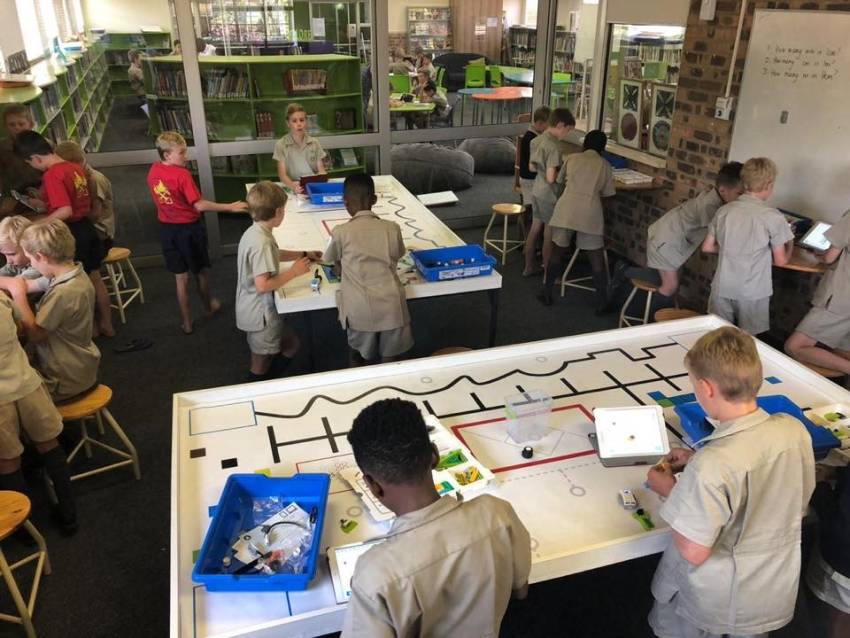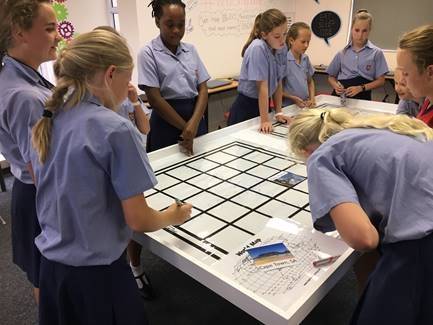St Peter's Prep Schools: The Difference ... Part 6
Motivation
As we introduced changes to our teaching methodology, we began to notice improvements in the ways the boys and girls learned. However, we were not satisfied. Many of us felt that children had the ability to learn far more quickly than was usually the case at school. We began to look at the question of motivation. What was it that held the attention of some children so completely that they were oblivious to all around them, even to offers of food?
The internet and psychological journals abounded with ‘research’ and opinions on this topic but there was nothing that really stood out for us. Eventually, our research led to a school in Brazil. Established by the innovative industrialist, Ricardo Semler, Escola Lumiar was originally intended for the children of his company’s employees.
At that time, each pupil was given a project for each year and sometimes longer. The project was decided upon by the child, teacher and parents. It may have been something like the construction of a bicycle. Whatever it was, it had to appeal to the child’s interests. Learning of all ‘subjects’ thereafter took place within the context of the project. This included Maths, Language, History, Geography, Citizenship and so on. During the course of the project, the child was assisted by a coach, teacher and visiting professionals who could advise on specific aspects, e.g. engineers, architects, doctors, depending on the nature of the project.
At that time, it was difficult to gain more information about the school as the staff primarily spoke Portuguese. Nevertheless, we persisted. What captivated us was that the methodology incorporated three characteristics which we had recently discovered. Academics, looking into the application of technology to teaching, were developing online lessons which were interest-driven, self-directed and self-assessed. The meaning of these concepts is almost self-evident.
Interest-driven
We recognise that as a consequence of their environments and the interests of their parents, each child has a unique suite of fields which fascinate them. The ideal would be to pose all learning around each child’s individual interests. This requires substantial staff resources and finance, but we have made devised ways to come closer to this ideal.
We can offer choice in the manner in which we construct assignments to make them more appealing to a wider group of students. We can also discuss topics with children and allow them to pose their own questions; in other words, allow them to determine what it is they wish to learn about the topic.
Self-directed
Self-directed means that students are free to tackle the assignments when and how they wish. When it’s appropriate, we try to give pupils their work in advance and allow them the freedom to tackle them when they are ready (although there are deadlines), in the manner and venue which they choose. Sometimes we also provide the option of working alone or in a group.
Self-assessed
This means that students are able to see for themselves whether or not they have been successful. For example, nobody needs to tell a child when he or she is riding a bicycle successfully. The opportunity to self-assess one’s success leads to quicker learning. I have dealt with this more fully under the topic Feedback. It is sometimes difficult to achieve in teaching. In such situations, we have found the use of rubrics to be helpful. In certain situations, students can be provided with the answer if there is a correct one and then allow them to find their own way to reach this.
When we began to include the above elements in our teaching, we could immediately see the difference.Improved pupil engagement was conspicuously more evident.
We continued to research motivation.As business leaders, globally, were equally interested, we found the Harvard Business Review and Forbes Magazine to be useful sources.In 2009, an article drew our attention to Daniel Pink’s book, Drive.He pointed out, that in the main, corporations sought to motivate with money: the more money one brings into the business, the more one receives as a reward.Citing earlier studies which had been ignored as well as research conducted by no less than the US Federal Bank, he contended that material rewards can have the opposite effect on motivation.He identified three factors key to motivation which have no relationship to financial or material reward at all.
Pink contended that the most powerful motivators were:
- autonomy in tackling a task;
- achieving mastery of a new skill;
- having a purpose beyond a material reward for performing the task.

Self-directed learning: some like to work alone, others in groups.
We were delighted by this discovery. St Peter’s believes in the potential of each child but accepts that each individual requires a different amount of time and a different route to realise this. It’s therefore particularly disheartening for us to observe children who avoid getting down to tasks which they feel are beyond their ability, who give up too easily because they doubt their own ability.
Whenever possible we try to include these elements in pupil assignments:
autonomy: autonomy equates to self-directed. As mentioned earlier, the school timetable is a Bismarckian invention and is designed with the completion of the curriculum in mind and not the ability of the pupils to absorb the information. It is a relic of an era when in large part, education served to provide a labour force with the necessary skills to serve the factory owners. It is certainly not child-friendly.
We try to create the latitude to allow pupils to tackle the work when and how they want, rather than according to a timetable.
mastery: you will have noted that the School is gradually moving away from the awarding of marks. We would much prefer pupils to have properly mastered each and every concept that they learn. We understand that they learn at different rates and in different ways and we therefore prefer to use the term yet. In other words, as opposed to 63% for Maths and then move on without covering 37% that is unknown, we would prefer that the pupil is graded as not yet and keeps trying until mastery has been achieved. Of course, this has not as easy as it seems, but is an approach that sets high expectations of the children and does not allow the option to give up if a concept is not understood and the teacher has to move on.
purpose: in the main, human beings are wired to give of themselves, to contribute to the greater good. Our own community is an example of this with their frequent and unsolicited aiding of people in need. So many innovations have emerged from the tinkering’s of people working in their own time, their purpose being to give back by solving a problem or making things better. These include our own Ludwick Marishane’s waterless bath (developed while he was a university student), Facebook and even the Internet.
Purpose is a difficult element to introduce to lessons, but at the very least, one can explain to pupils why they need to learn a particular concept e.g. fractions. Our staff also imbed the learning of such skills in enquiry-based lessons where the pupils are set problems to solve, the value of which is evident to them. So, rather than say if Mpho has 16 marbles, Sarah, 23 and Jason, 18, what fraction of his marbles…, we could provide the total volume of water consumed in the country, the total available and request pupils to calculate the fraction by which total consumption needs to be reduced.

Pupils learn more quickly when they observe the work of others and seek advice.
By 2013 we had been training and encouraging staff to include these elements in their teaching, but in truth human nature ensured that we had only been partially successful. It was not until the following year when the upgrade of Witkoppen Road forced us to allow pupils to work from home that all of these elements came into play.
We were determined not simply to set ‘project work’ that would merely occupy the pupils. We wanted them to continue making the same progress as they had in the classroom. The experience was painful for staff. Many had their preparation rejected by the Academic Heads for failing to include these elements. It took an enormous amount of work to provide several choices which covered the same basic skills. Nevertheless, with firm guidance, the quality of the assessments began to improve and we were able to observe the impact on those pupils who elected to come to work at School rather than at home.
The number of visits to sickbay dwindled to 1 per week from the average of 26 per day. Instead of playing with their friends during break-time, most pupils remained in their classrooms, chewing on their sandwiches as they continued working on their assignments but there were even more encouraging observations. Children who had traditionally struggled in the formal atmosphere of the classroom made far better progress and achieved a good deal more when allowed the freedom to self-direct their learning. The boffins who had habitually achieved A’s in the formal setting, relying largely on their memories, suddenly required a great deal more guidance and encouragement. They now had to apply what they had learnt and employ more higher order thinking in order to succeed. We knew we were on the right road.